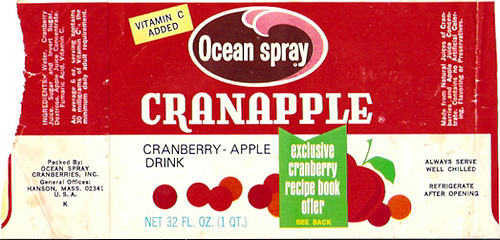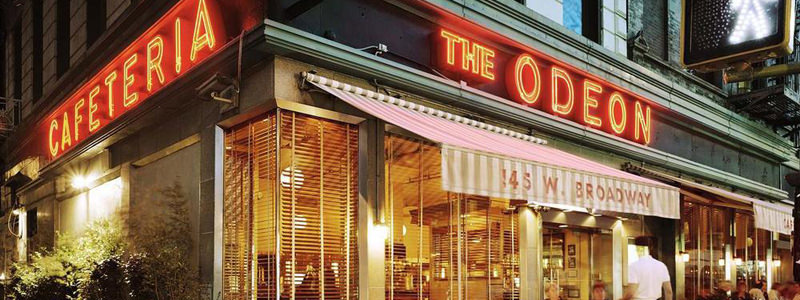Drop in on any party or bar in the late ‘90s and early aughts and chances are a majority of people would be holding a martini glass filled with a bright pink liquid they would unashamedly be sipping on called a Cosmopolitan. Probably one of the greatest cocktail hits of our lifetime, the Cosmo is the perfect example of how fickle our booze culture can be, a drink that is for a brief moment all the rage, and then just as quickly as it came, becomes a joke that most people wouldn’t dare order, much like music today and the BackStreet Boys of yesteryear.
But the Cosmo was more than just an “of the moment” drink; it made a significant impact on how we approach drinking, and cocktail culture in general. In fact, much of the high-end cocktail culture we actually encounter today, the speakeasies, the high-end ingredients, and the drinks so complex only a mixologist can recreate them, can be seen as a direct response to the simplistic era the Cosmo embodied. Just as music reacted to an influx of late ‘90s boy bands with bands like The Strokes, The Yeah Yeah Yeahs, and The Hives, so too did booze culture. And now, just like music, we’re probably in one of the richest and most interesting times to be a drinker, but if it weren’t for the Cosmo, we might never have gotten here.
The exact origin of the Cosmopolitan is fuzzy at best, mostly because until the late ‘80s it was a similar drink that went by a different name. In the late nineteenth century a cocktail known as the Daisy emerged as a delicious drink that was loved for its ability to modify harsher flavors of booze. The classic recipe called for spirit, sweetener and citrus, which is similar to the structure of the Cosmo – this recipe is now known as the classic “sour family” recipe structure – but vodka wasn’t a spirit used much in cocktails like this back then, mostly because it already had little flavor to begin with and the citrus used was not cranberry, because cranberry isn’t a citrus. That being said, it’s possible that this proven drink structure is the foundation for which the Cosmo is based.

A more direct connection comes from 1968, when the folks at Ocean Spray were looking for more inventive ways to market their cranberry juice to adults. While the drink was popular to serve to children, the marketing execs were looking for ways to expand their market share, so they printed a recipe on the side of every carton of cranberry juice for a drink they called the “Harpoon.” The Harpoon called for an ounce of vodka, an ounce of cranberry and a squeeze of lime, close to the Cosmo recipe, but still missing the sweet Cointreau.
Who actually took the idea of combining cranberry, lime, Cointreau and vodka, shaking it over ice and straining it into a martini glass following the creation of the Harpoon is also a bit foggy, but chances are the drink came out of one of two meccas for gay culture: Miami Beach and Provincetown, MA. According to James Winter, author of Who put the Beef in Wellington?: 50 Culinary Classics, Who Invented Them, When and Why, Cheryl Cook, a bartender working in South Beach in the 1970s responded to customers who were looking for a drink that made them look sophisticated, yet was easier to consume – read: sweeter – than a traditional martini, so she created a drink using lemon-infused vodka and triple sec combined with lime and cranberry juice to give it a pretty pink hue. The problem with the tale, however, is that no one can definitively prove its validity as the place the cocktail was officially created.
That’s because around the same time Cheryl Cook was supposedly inventing the cosmo is Miami, a bartender named John Caine was also experimenting with a similar ingredient combination in Provincetown. This makes a lot of sense as well, because as Winter states in his book, Provincetown is located near one of our country’s main cranberry producing regions, so using the juice in his cocktail would be natural for Caine. When Caine left Provincetown for San Francisco, he took the drink with him, where it became popular within the gay social scene.

However both of these stories are never officially credited with the creation of the Cosmopolitan. Perhaps it’s simply because the drink never really broke out of the gay subculture where it was popular, or because when it was finally embraced by the mainstream, the parties responsible for introducing it to the masses were allowed to take the credit, as often happens when art leaves a subculture for the larger stage. Whatever actually happened, the formal invention of the Cosmo occurs in 1987 when a bartender named Toby Cecchini made the drink while working at the famous Odeon in Manhattan’s Tribeca neighborhood.
It’s not hard to see why The Odeon would be the locale to put the Cosmopolitan on the mainstream map. In the ’80s and early ’90s The Odeon was one of the main restaurants to see and be seen in Manhattan. SNL cast parties were often held at the restaurant, and celebrities, models and movers and shakers often rubbed elbows in the booths. It was the restaurant that made Keith McNally – owner of Balthazar, Pastis and Minetta Tavern – famous and it’s here that many tastemakers first encountered it. While the restaurant no longer has the drink on the menu, though we’ve been told they’ll still make it if asked, they do have a variation on the recipe with a drink they call the Ginger Martini, which also calls for Citroen vodka and Cointreau, but subs lemon juice for lime and ginger for cranberry.
From The Odeon the drink spread across the city, eventually ending up in The Rainbow Room, where Madonna is pictured drinking it at a Grammy after party. With Madge’s seal of approval, the drink seems to have been embraced by celebrity culture, but it didn’t truly explode until a massively popular TV show decided to make the drink its characters’ drink of choice.

Sex and the City is responsible for launching several cultural phenomenons, from our obsession for cupcakes to our quest for incredible designer shoes and bags, but nothing swept the country due to the show’s influence as fast as the Cosmo. In the second season of the show the cocktail makes its debut during episode 19, when Samantha orders it at a wedding bar, and the rest is history. The cocktail appeared several more times throughout the show, leading people throughout the country to recreate the cocktail in order to sip along with their favorite characters.
It’s at the same time the cocktail reached true rockstar status that the backlash had already begun. Esquire said of the cocktail: “Like Celebration, Florida (the Disney town), it (the Cosmopolitan) has the appearance of tradition with none of the workmanship. The purpose of a cocktail is to take the pronounced, even pungent, flavor of a liquor and, through careful blending with acids, aromatics, and essences, transform it into something new and hitherto-untasted. Vodka, though, has no flavor. If a cocktail is alchemy, this is just mixing.”
Bartenders began to hate the cocktail for the same reasons they loved it when it was first created, it was too simple. They wanted to challenge people with flavors and textures, not simply make them a drink that was easy to swill. Just as the Cosmo started in small drinking subcultures, these groups would eventually lead to the cocktail’s demise.
At the same time Sex and the City was promoting the sweet pink drink to the masses, Sasha Petraske was opening Milk & Honey on Manhattan’s Lower East Side. A speakeasy in which the bartenders made cocktails focused on true craftsmanship, they were drinks that sought to challenge the consumer, not simply provide them with an easy delivery method for booze. As music too was reacting to the bubblegum pop of this time period, drinks were as well and just like Sex and the City created The Cosmo, Mad Men would ultimately bring the craft cocktail movement to the masses, but that’s for another story.
Sources:
http://www.makemeacocktail.com/blog/25/history-of-the-cosmopolitan-cocktail/
http://relish.com/articles/cosmo-cocktail-history/
http://www.georgetowner.com/articles/2012/apr/04/cosmopolitan-once-it-cocktail/
http://ohgo.sh/archive/sex-and-the-city-the-cosmopolitan/
http://liquor.com/articles/behind-the-drink-the-cosmo/#lqXEzmQR6pT2bkze.97
